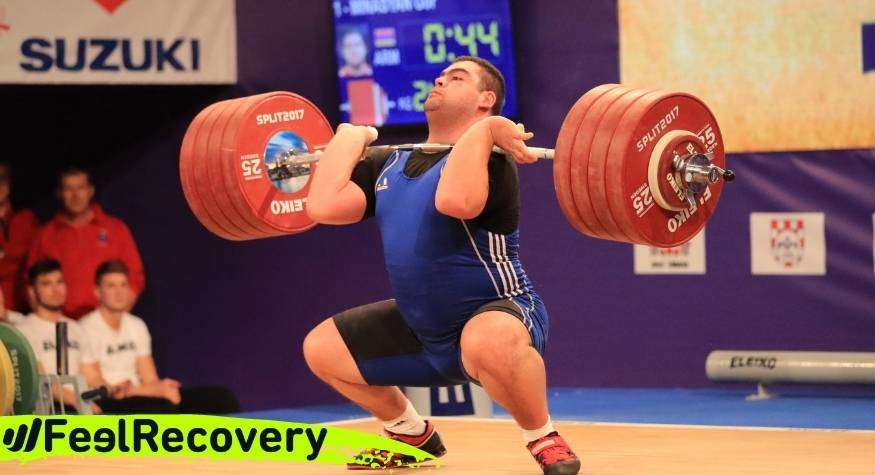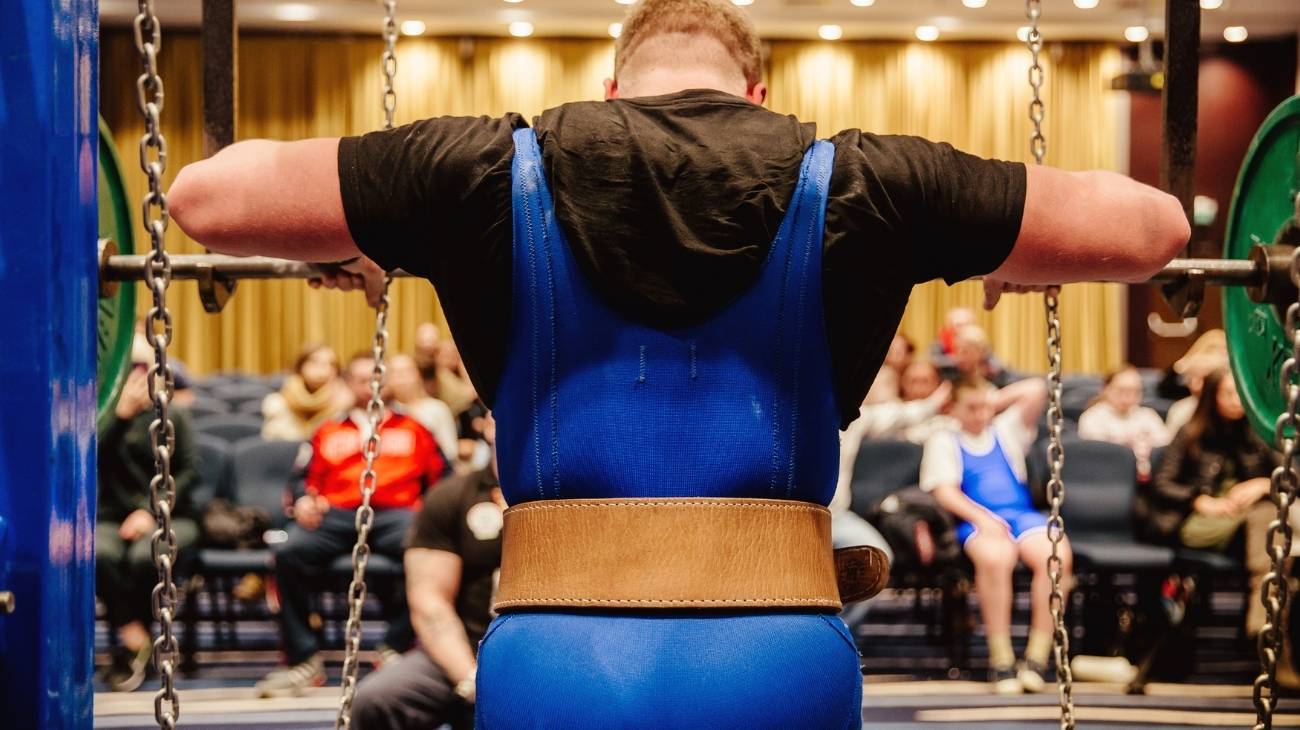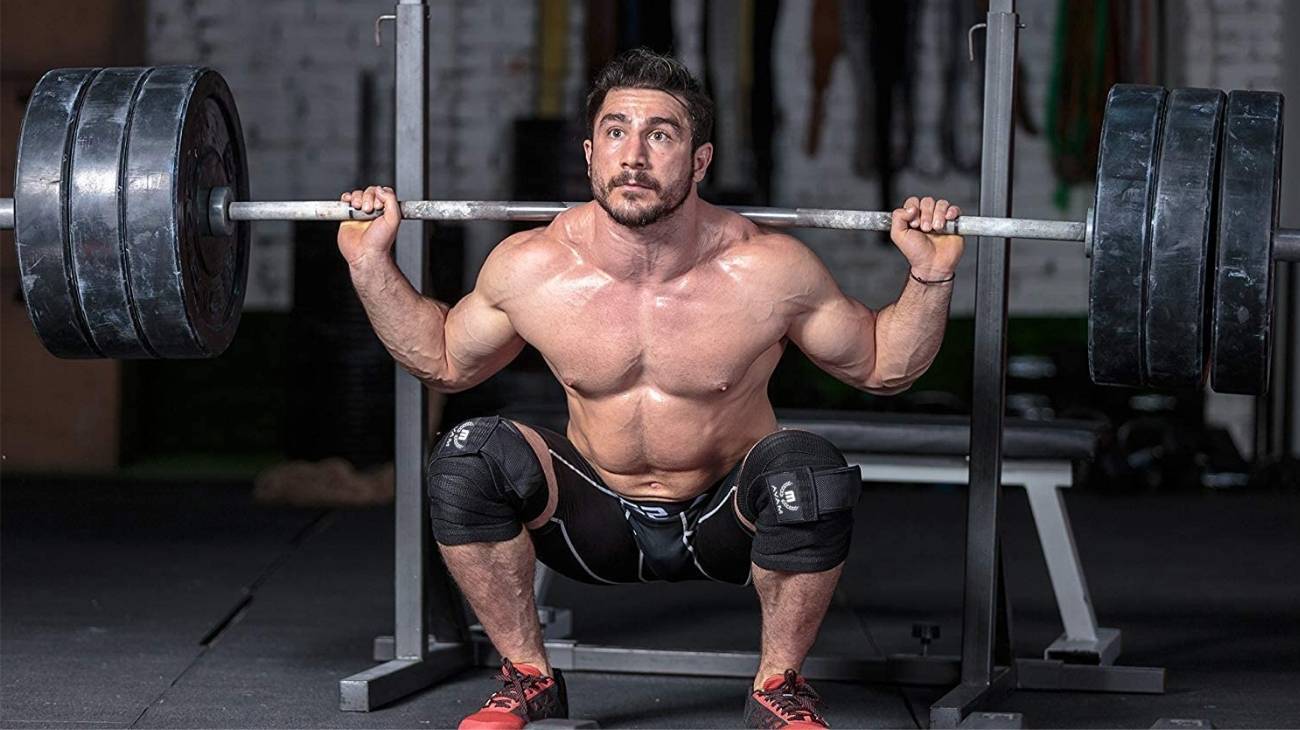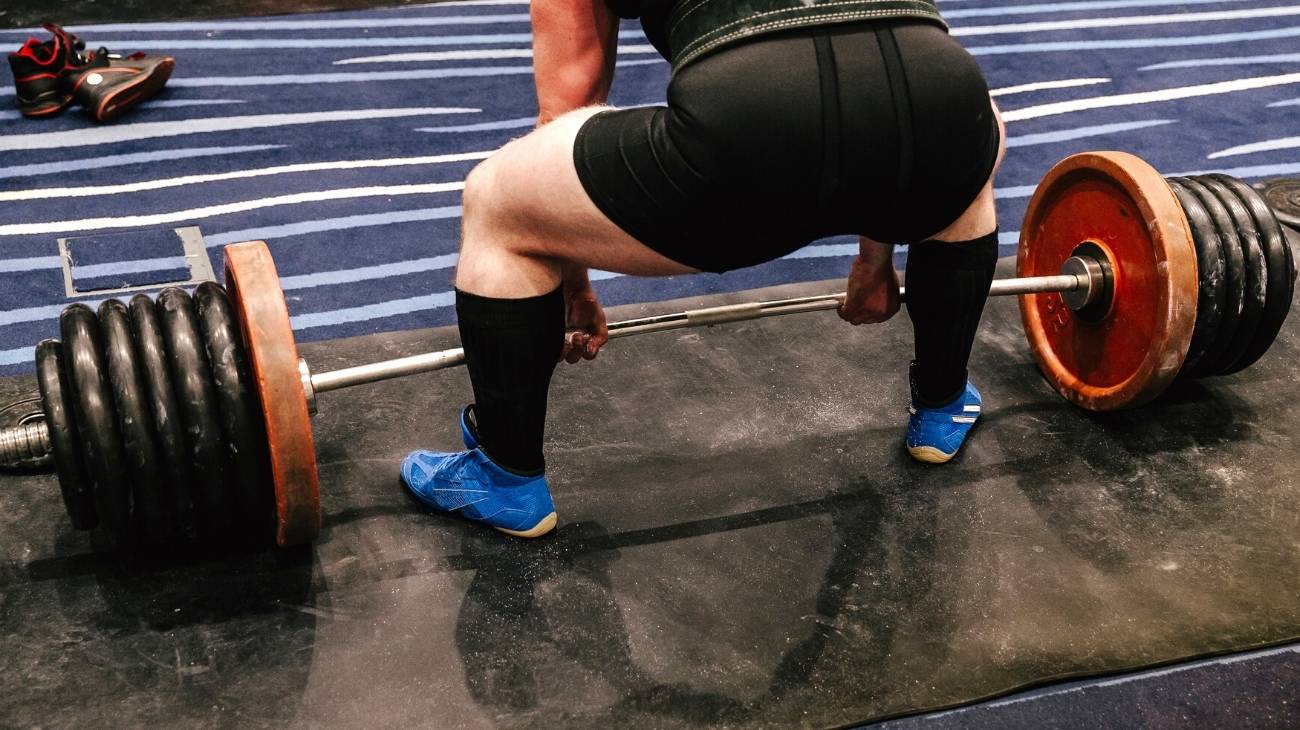Correct weightlifting technique will depend on the flexion of the knee. When knees have tissue fatigue or poor technique, it is highly likely that there will be accidents in the execution and possible injuries.
It is important to know what are the most common knee injuries in weightlifting and other strength sports and how to apply the PRICE therapy in case you need first aid.
What are the most common types of knee injuries in weightlifting and powerlifting?
The knee has the function of supporting and maintaining the athlete's balance. Take a look at this list of the most common knee injuries in weightlifting to learn how to prevent them.
Muscle wasting
The mildest discomfort that can be felt in the knee, it is like a muscular exhaustion that translates into weakness when doing the corresponding weightlifting exercises. It is caused by the repetitive and intense movements typical of this sport.
Weightlifting consists of two modalities: Snatch and Clean and Jerk. In both cases the technique is very mechanical so the movements will always be the same, with more or less intensity in them. What happens when wear and tear is not taken care of? There are likely to be sequelae such as torn ligaments and muscle tears because the tissues are not at 100% of their capacity to withstand the demands of sport.
Knee bursitis
Movements on the outside of the joint are protected by the bursae, which are fluid-filled cushions that receive the intensity of movement and prevent joint friction. When inflamed, there is a shooting pain in the joint and mild flexion and extension are not possible.
The constant flexion and extension movement with all that extra weight causes wear and tear on the knee and overloading of the bursa. In these cases, good rest should be resorted to and if this does not work, the excess fluid in the bursa should be drained.
Torn ligaments
Although any ligament in the knee and thigh can rupture, the most common case is the rupture of the Anterior Cruciate Ligament, which gives way under the constant and repeated pressure on the body during the strides and scissors performed by the weightlifter.
To reduce the likelihood of injury, there must be a proper warm-up of the body and prior mobility of the joints. Ligaments are known to be very tough, but if the tissues are not prepared for the physical strain, it is possible to have micro cracks and this can lead to a complete rupture of the ligaments.
Muscle tears
During deep strides, tendons and muscles are overstretched and tear completely or partially. This starts with a micro-tear in the tissues of the upper thigh.
When tears occur, this also affects the joint because some of the stress is placed on the surrounding tissues. Concentration and focus must always be maintained on the actual weight the athlete can lift. Skeletal muscle overexertion will cause the fibres to give way and break.
Meniscus injury
There are two menisci in each knee, and the meniscus on the outside is the one that tends to suffer the most from the weight of the rubber discs used in weightlifting. When a meniscus is injured, there is damage to the fibrocartilage in this part of the body, which functions as a shock absorber within the joint itself.
When this occurs, severe pain is felt when walking and standing, so it's something you shouldn't overlook. Why does a meniscus get injured? This occurs when the weight of the barbell forces a body imbalance that is felt most strongly in the knee, as it is the joint that bears the greatest load and stress. Initially, you may be able to relieve the pain with the PRICE therapy that you will learn in this article.
Knee sprain
A knee sprain is terrible damage to the ligaments and muscle fibres either from excessive twisting of the knee or from an imbalance in the joint. The imbalance occurs from loss of balance when holding the bar in any phase of the lift.
Again, the athlete must be careful with his technique and must know the limits of his capabilities before attempting to lift a weight that his body will not support. Sprains are more likely to occur in the shoulders and knees, ankle sprains are unlikely to occur as the ankles are fixed to the ground.
Fractures
When the head of the femur, tibia, patella or fibula feel all the stress in weightlifting, cracks and breaks in one or more pieces are possible. Fractures usually occur in the form of displacements, so the bones do not pass through the skin.
Best products for recovery from knee injuries in weightlifting and powerlifting
Bestseller
-
2 Knee Compression Sleeve (Black/Gray)
$19.95 -
2 Knee Compression Sleeve (Green/Navy)
$19.95 -
2 Knee Compression Sleeve (Pink/Bordeaux)
$19.95 -
2 Patella Knee Strap (Black/Gray)
$14.95 -
2 Patella Knee Strap (Green/Navy)
$14.95 -
2 Patella Knee Strap (Pink/Bordeaux)
$14.95 -
Heating Pad for Microwave Classic Bottle Shaped (Hearts)
$19.95 -
Heating Pad for Microwave Classic Bottle Shaped (Oxford)
$19.95 -
Heating Pad for Microwave Classic Bottle Shaped (Sport)
$19.95 -
Microwave Heating Pad for Back Pain Relief (Extra Large) (Hearts)
$29.95 -
Microwave Heating Pad for Back Pain Relief (Extra Large) (Oxford)
$29.95 -
Microwave Heating Pad for Back Pain Relief (Extra Large) (Sport)
$29.95 -
Microwaveable Heating Pad for Pain Relief (Hearts)
$19.95 -
Microwaveable Heating Pad for Pain Relief (Oxford)
$19.95 -
Microwaveable Heating Pad for Pain Relief (Sport)
$19.95
How to apply the RICE therapy to treat knee injuries in weightlifting?
The PRICE therapy is known for its analgesic and anti-inflammatory effect on injuries, it is an update of RICE as it was better known previously. Check out each of the steps you need to take in the approach to minor and soft tissue injuries.
- Protection: The purpose of this step is to restrict movement of the knee from the outset, thus avoiding sudden movements that complicate the injury. You can use a conventional bandage to cover the joint.
- Rest: Reduce movement in the knee as much as possible. Walk with crutches or a cane, keep your mobility to a minimum so that the tissues can regenerate better.
- Ice: This has the advantage of reducing pain, reducing swelling and stopping the spread of the haematoma in the tissues. Apply the ice for a maximum of 20 minutes with the support of a handkerchief.
- Compression: Try covering the joint with an elastic bandage, although you will see a better result if you use a compression knee brace. The idea is to lower the blood flow to the injured tissues.
- Elevation: Elevate the affected knee on a pillow. It is recommended that you lie down for as long as possible, and when you see significant improvement, you can sit up and continue with the leg extended and elevated. This reinforces the effect of the compression and ice.
References
- Harman, E., & Frykman, P. (1990). Bridging the gap—research: The effects of knee wraps on weightlifting performance and injury. Strength & Conditioning Journal, 12(5), 30-35. https://journals.lww.com/nsca-scj/Abstract/1990/10000/BRIDGING_THE_GAP_RESEARCH__The_effects_of_knee.3.aspx
- Escamilla, R. F. (2001). Knee biomechanics of the dynamic squat exercise. Medicine & science in sports & exercise, 33(1), 127-141. http://productosfortia.com/knee-biomechanic.pdf
- Hartmann, H., Wirth, K., & Klusemann, M. (2013). Analysis of the load on the knee joint and vertebral column with changes in squatting depth and weight load. Sports medicine, 43, 993-1008. https://link.springer.com/article/10.1007/s40279-013-0073-6
- Ugalde, V., Brockman, C., Bailowitz, Z., & Pollard, C. D. (2015). Single leg squat test and its relationship to dynamic knee valgus and injury risk screening. Pm&r, 7(3), 229-235. https://www.sciencedirect.com/science/article/abs/pii/S1934148214007321
- Comfort, P., & Kasim, P. (2007). Optimizing squat technique. Strength & Conditioning Journal, 29(6), 10-13. https://journals.lww.com/nsca-scj/Abstract/2007/12000/Optimizing_Squat_Technique.1.aspx
- Aasa, U., Svartholm, I., Andersson, F., & Berglund, L. (2017). Injuries among weightlifters and powerlifters: a systematic review. British journal of sports medicine, 51(4), 211-219. https://bjsm.bmj.com/content/51/4/211.short
- Mazur, L. J., Yetman, R. J., & Risser, W. L. (1993). Weight-training injuries: common injuries and preventative methods. Sports Medicine, 16, 57-63. https://link.springer.com/article/10.2165/00007256-199316010-00005
- Keogh, J. W., & Winwood, P. W. (2017). The epidemiology of injuries across the weight-training sports. Sports medicine, 47(3), 479-501. https://link.springer.com/article/10.1007/s40279-016-0575-0
- Siewe, J., Rudat, J., Röllinghoff, M., Schlegel, U. J., Eysel, P., & Michael, J. P. (2011). Injuries and overuse syndromes in powerlifting. International journal of sports medicine, 32(09), 703-711. https://www.thieme-connect.com/products/ejournals/abstract/10.1055/s-0031-1277207
- Hamill, B. P. (1994). Relative safety of weightlifting and weight training. J Strength Cond Res, 8(1), 53-7. https://paulogentil.com/pdf/Relative%20Safety%20of%20Weightlifting%20and%20Weight%20Training.pdf









































